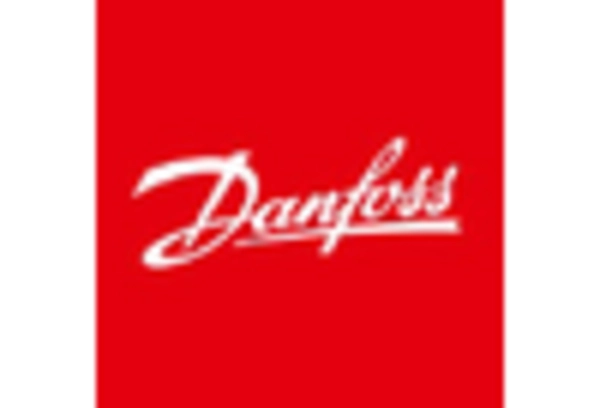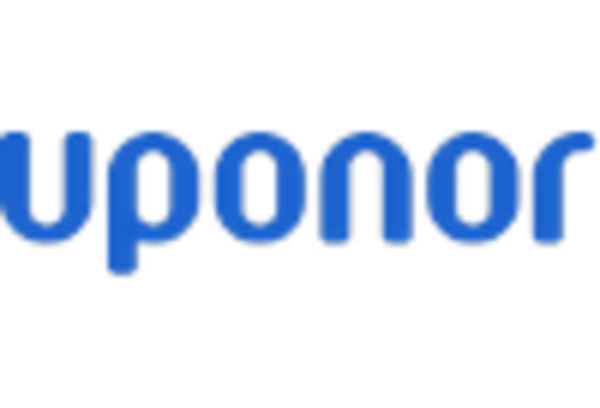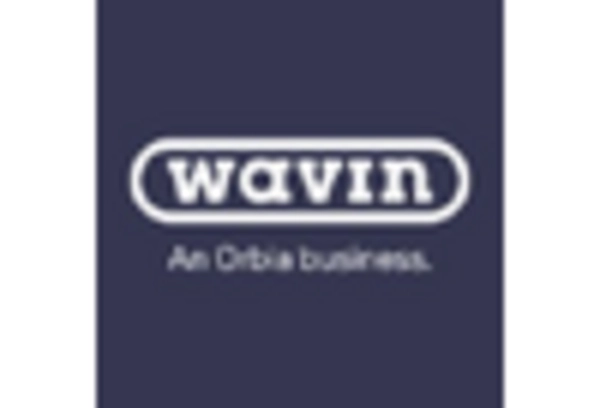Growing Awareness of Indoor Air Quality
The Residential Hydronic Underfloor Heating Market is witnessing a shift in consumer preferences towards systems that improve indoor air quality. Unlike traditional heating methods that can circulate dust and allergens, hydronic underfloor heating provides a cleaner and healthier environment by minimizing air movement. This aspect is particularly appealing to families with allergies or respiratory issues. As awareness of the importance of indoor air quality increases, more homeowners are likely to consider hydronic systems as a viable option. This trend could potentially lead to a significant increase in market demand, as consumers prioritize health and well-being in their heating choices.
Rising Demand for Energy-Efficient Solutions
The Residential Hydronic Underfloor Heating Market is experiencing a notable increase in demand for energy-efficient heating solutions. As consumers become more environmentally conscious, they seek systems that reduce energy consumption and lower utility bills. Hydronic underfloor heating systems, which utilize water to distribute heat evenly, are recognized for their efficiency compared to traditional heating methods. According to recent data, these systems can reduce energy usage by up to 30%, making them an attractive option for homeowners. This trend is further supported by government incentives aimed at promoting energy-efficient technologies, which are likely to drive market growth in the coming years.
Technological Advancements in Heating Systems
Technological innovations are playing a crucial role in shaping the Residential Hydronic Underfloor Heating Market. The integration of smart home technologies, such as programmable thermostats and remote control systems, enhances the user experience and optimizes energy usage. These advancements allow homeowners to monitor and adjust their heating systems in real-time, leading to increased comfort and efficiency. Furthermore, the development of more compact and efficient heating components has made hydronic systems easier to install and maintain. As these technologies continue to evolve, they are expected to attract a broader customer base, thereby propelling market growth.
Increasing Renovation and Construction Activities
The Residential Hydronic Underfloor Heating Market is poised for growth due to the rising trend of home renovations and new construction projects. As homeowners seek to upgrade their living spaces, there is a growing interest in modern heating solutions that offer enhanced comfort and efficiency. Hydronic underfloor heating systems are increasingly being integrated into new builds and renovation projects, as they provide an unobtrusive heating solution that maximizes floor space. Recent statistics indicate that the construction sector is experiencing a resurgence, which is likely to contribute to the expansion of the hydronic heating market. This trend suggests a promising outlook for the industry as more properties adopt these advanced heating systems.
Regulatory Support for Sustainable Heating Solutions
The Residential Hydronic Underfloor Heating Market benefits from a favorable regulatory environment that encourages the adoption of sustainable heating solutions. Governments worldwide are implementing policies and regulations aimed at reducing carbon emissions and promoting energy-efficient technologies. These initiatives often include financial incentives for homeowners who invest in eco-friendly heating systems, such as hydronic underfloor heating. As regulations become more stringent, the demand for compliant heating solutions is expected to rise, further driving the market. This regulatory support not only fosters innovation but also enhances the overall appeal of hydronic systems among environmentally conscious consumers.


















Leave a Comment